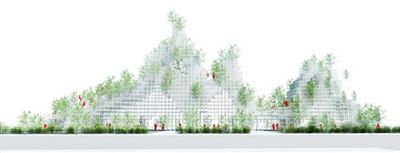deadline
30 Apr 2011
Himalayas Art Museum | logo design competition

Theme: Himalayas for the Future
Keywords: Continuity, Innovation, Diversity (Multicultural), Nature, Environmentally Conscious
Himalayas Art Museum is launching a call for submissions for it’s new logo design. However, the museum is not simply searching for a logo design, but for your vision for the future of the institution. What are your hopes and desires? What challenges do you think we will face? These are the questions we must ask as we move forward in new directions. Thus, we hope to have a logo that will adequately transmit this vision of a new institutional format in a global context.
Designers, artists, critics, curators, and cultural practitioners of all kinds are welcome to submit proposals.
CHECK WEBSITE for all application conditions and guidelines.
About Himalayas Art Museum
On September 26, 2009, the former Shanghai Zendai Museum of Modern Art was officially renamed as the Himalayas Art Museum. The new museum, located inside the grand Himalayas Art Centre, is scheduled to open to the public in May 2012.
Covering an area of more than 28,000 square metres, and with a total floor space of 160,000 square metres, the newly established archi-sculpture, the Himalayas Centre, was designed by world-renowned architect Arata Isozaki. Conveniently connected to downtown Shanghai by Metro Line 7, and only a block away from the Shanghai New International Expo Centre, the Himalayas Centre is located at its strategic, core location in the Grand Pudong Area, one of the fastest-developing areas of Shanghai.
The Himalayas Art Museum is committed to rejuvenating Shanghai’s status from the early 20th century as the hub of culture and art in Asia. It aims to carve out a unique platform to connect the past with the present and the future; to promote the development of contemporary culture and thinking; and to showcase the achievements that emerge from the communication between local intellectuals and the global art scene. By boldly integrating public space with the white cube, the young and ambitious museum is dedicated to presenting a new model for art museums, and a unique perspective from which to evaluate China’s contribution to, and interaction with, the many cultures of the world.
——————————————————————————–
This opportunity came via Artservis (Thanks!)
——————————————————————————-
Similar content
posted on
03 Apr 2014
posted on
15 May 2018
posted on
30 Nov 2011
posted on
25 Aug 2016
posted on
30 Apr 2019
posted on
16 Dec 2021




